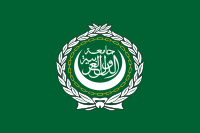Cambodia and Thailand clashed near their shared border, leaving one civilian dead and three injured. Each side blamed the other for starting the violence. The dispute, centered on a contested temple area, escalated with airstrikes and diplomatic tensions. Civilians have been urged to evacuate.
Cambodia-Thailand Border Clash Leaves One Dead, Sparks Diplomatic and Military Escalation


At least one civilian was killed on Thursday in a Cambodian rocket and artillery strike as military forces from Cambodia and Thailand clashed yet again over a contentious border region. The renewed violence, which highlights the volatility of the longstanding territorial dispute, also left three other civilians injured, including a five-year-old child, prompting fresh concerns over the safety of residents in the affected areas.
The fighting flared up near two ancient temples located along the shared border between Thailand’s Surin province and Cambodia’s Oddar Meanchey province. Both nations quickly blamed each other for instigating the confrontation, each presenting its own version of how the violence erupted.
The conflict is rooted in a deep-seated disagreement over the Emerald Triangle, a geopolitically sensitive area where the borders of Thailand, Cambodia, and Laos converge. The region, known for its historical and cultural significance due to the presence of several ancient temples, has been at the heart of border demarcation disputes between Thailand and Cambodia for many years. Despite previous peace efforts and temporary agreements, the exact line separating the two countries remains contested and a persistent source of tension.
Amid the renewed clashes, a livestream video from the Thai side of the border documented scenes of panic, showing residents fleeing their homes and seeking shelter inside a concrete bunker as explosions echoed nearby. These images underscored the real and immediate danger posed to civilians caught in the crossfire of the escalating conflict.
In response to the outbreak of violence, Thai authorities closed all official border crossings with Cambodia. Reports indicated that fighting had erupted at no fewer than six separate sites along the frontier, reflecting the scale and seriousness of the escalation.
The Cambodian government swiftly condemned what it described as "unprovoked military aggression" by Thailand. Officials denounced the incident as a "reckless and hostile" act and issued a statement expressing their condemnation "in the strongest possible terms."
Meanwhile, Thailand's military placed the blame squarely on Cambodia, claiming that Cambodian forces initiated hostilities by launching two BM-21 rockets into a civilian area within Surin province’s Kap Choeng district. According to Thai military officials, the clashes began when a unit guarding the historic Ta Muen temple detected the presence of a Cambodian drone flying overhead. Shortly thereafter, Thai soldiers reportedly observed six armed Cambodian troops approaching a barbed-wire fence in front of the Thai military post. Among them was a soldier armed with a rocket-propelled grenade.
Thailand stated that its soldiers shouted a warning to the approaching Cambodian troops, but claimed that Cambodian forces responded by opening fire toward the eastern side of the temple, near the Thai base. This action, Thai officials said, marked the beginning of the exchange of fire between the two sides.
Cambodian authorities, however, presented a completely different narrative, accusing Thai forces of being the aggressors. The Cambodian government argued that its troops were defending sovereign territory and that the Thai military had breached a bilateral peace agreement by launching an armed assault on Cambodian positions.
“The Thai military violated the territorial integrity of the Kingdom of Cambodia by launching an armed assault on Cambodian forces stationed to defend the nation's sovereign territory,” stated Maly Socheata, a spokesperson for Cambodia’s Ministry of Defense. She further emphasized that Cambodian troops “exercised their legitimate right to self-defense, in full accordance with international law, to repel the Thai incursion and protect Cambodia’s sovereignty and territorial integrity.”
This latest episode of violence occurred just a day after Thailand escalated diplomatic tensions by recalling its ambassador from Phnom Penh and announcing its intention to expel the Cambodian ambassador from Bangkok. This move followed a series of incidents involving landmines in the disputed area, including one in which a second Thai soldier within a week lost a limb. Thailand alleged that the explosive devices were recently planted by Cambodian forces.
As the conflict intensified, Thailand’s military took the additional step of deploying six F-16 fighter jets to the region. In an update shared on social media, the army claimed that one of the fighter jets had successfully destroyed a Cambodian military target, further raising the stakes in the already tense situation.
In a counterclaim, Cambodia’s Ministry of Defense reported that Thai fighter jets had dropped two bombs on a road located within Cambodian territory. The claim has not yet been independently verified, but it underscores the increasing complexity and danger of the conflict.
The Thai embassy in Phnom Penh issued an urgent advisory to its citizens, warning them via Facebook to leave Cambodia “as soon as possible,” citing growing security risks and instability resulting from the military confrontation.

 বাংলা
বাংলা  Spanish
Spanish  Arabic
Arabic  French
French  Chinese
Chinese 
